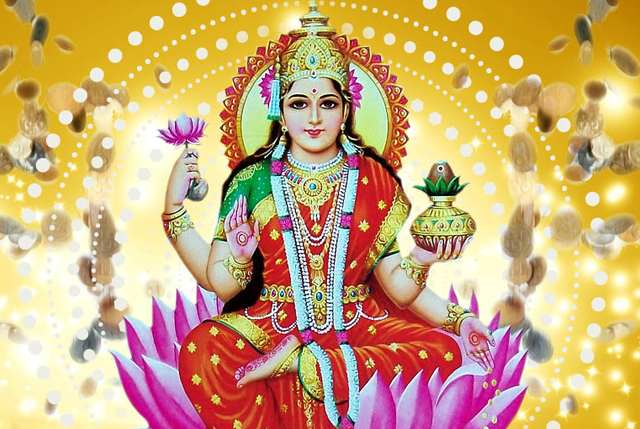Paramacharya of SWAHA, Pt. Hardeo Persad
There are three ways in which we can unravel the mysteries of Hinduism, the scriptures and the world: the experimental, the cosmological and the metaphysical. It is often said that great minds reflect upon principles, mediocre minds upon events and small minds upon people. We interpret Divali in this context. Hindus have celebrated Divali, the festival of lights, since ancient times. Lakshmi Maa, who is representative of Light, is the key to Divali.
Once, the earth was burdened by a war between the Devtas and the Danavas, the good and the bad. The battle went on for some time, neither side gaining an advantage. They decided to appeal to the Divine Lord for a solution. They approached Lord Vishnu, who advised that the ocean of milk should be churned. The two sides formed a temporary peace alliance in this quest. In order to churn the ocean, they placed the mountain Mandara in the ocean of milk. However, the mountain sank and they appealed to the Lord again. Shri Vishnu assumed the form of a giant tortoise, Kurma Avataar, dived into the ocean and carried the mountain on his back. They wrapped the serpent Vasuki around the mountain and used it as a churning rod. The churning process took place and 14 articles emerged from the ocean, including poison, nectar and Goddess Lakshmi.
When she emerged from the ocean, it is said that both Devtas and Danavas worshipped her. Many declare that this is the origin of Divali. Hinduism is full of symbolism. Does the ocean of milk actually exist? The ocean of milk is the unconscious mind. Mandara is the mountain of mental advancement or the mountain of yoga. The Devtas and Danavas are the positive and negative tendencies. In this world of duality, there are both positive and negative tendencies but each has its use. Negative qualities of anger, lust and greed have a purpose but they must be harnessed: one might be greedy for knowledge or blessings; lust is necessary for procreation.
The serpent is the churning cord in the ocean and this is symbolic of what each individual must undergo. Lord Vishnu appeared as a tortoise, a symbol of a firm and unwavering faith, the base upon which the mountain of mental advancement rotates. The Atharva Veda states that material wealth without spirituality is sinful. When the unconscious is churned, poison emerges as well as Lakshmi Maa. Materialism is that poison; without self-control it can cause destruction. We must churn the unconscious mind to gain the wealth of knowledge that leads to spiritual evolution.
Lakshmi Maa is considered the Goddess of wealth and light. She emerged as a symbol of many positive and noble qualities: love, peace, prosperity, understanding, unity, togetherness, brilliance, reflection. She is often associated with the colour pink and red. In Hinduism, red is associated with Rajas Guna or the materialistic mode. White is symbolic of spirituality. When they are mixed together, they form pink, which symbolises material and spiritual wealth. Lakshmi is usually portrayed with the lotus flower. The lotus, it is said, extracts all the nutrients from the impurities around it, but it remains pure and perfect. Lakshmi Maa symbolises being in the world but not of the world. The light in Divali symbolises our journey to enlightenment, wisdom and right attitudes. In the prayer, Om Asato Maa Sad Gamaya, Tamaso Maa Jyotir Gamaya, Mrityor Maa Amritam Gamaya, we pray, “O Lord, from untruth, lead me to the truth of the Self; from the darkness of ignorance lead me to the light of spiritual knowledge, represented by Lakshmi Maa, and from death, lead me to self-realisation.”



